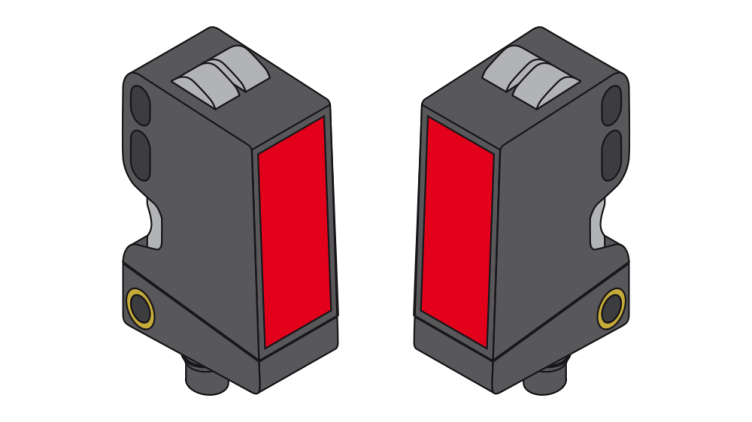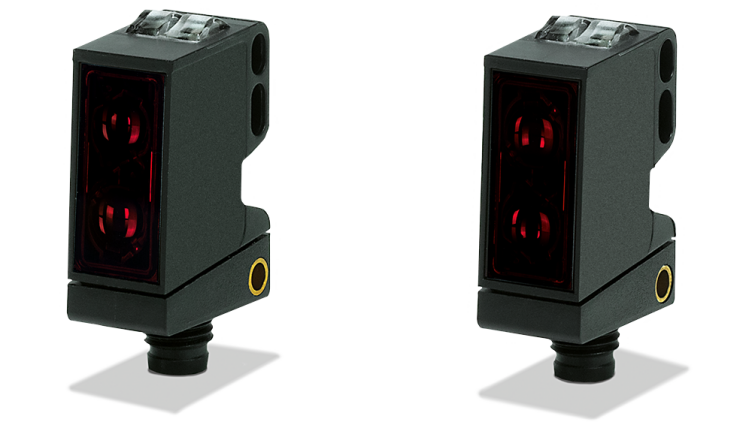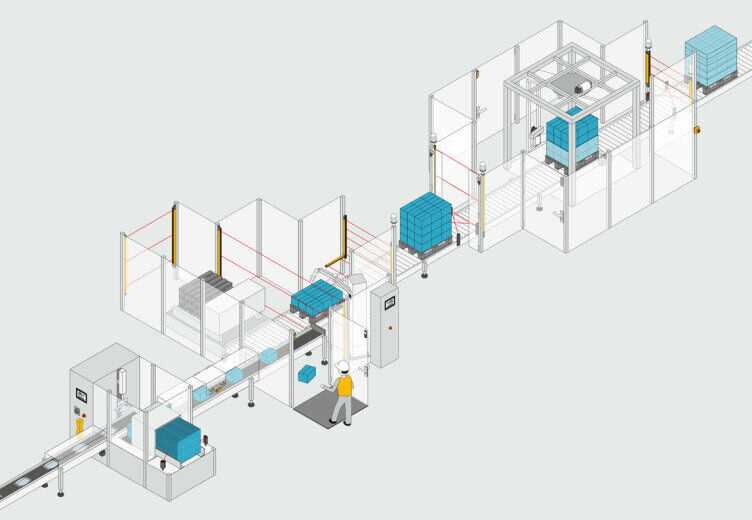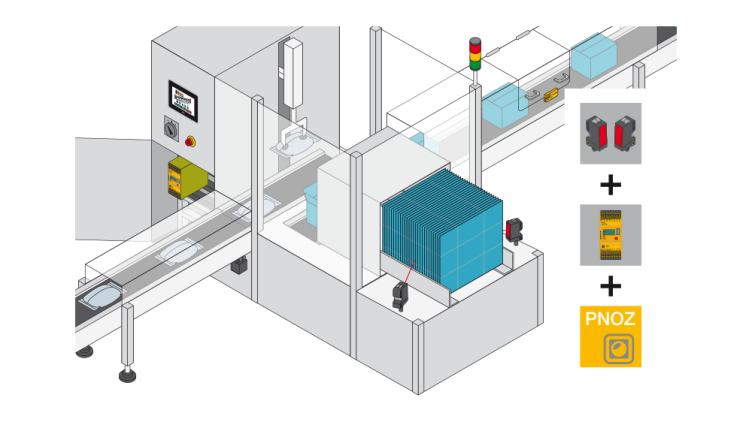A photoelectric sensor, also known as an optical sensor, is a sophisticated device, which is used for contactless object recognition. They use light beams reflected by the material to detect an object. This enables reliable, precise detection of a variety of materials and surfaces. The optical sensors do not fulfil a safety function .
Photoelectric sensor
What is a photoelectric sensor?

How does it differ from simple light barriers?
A light barrier detects when objects interrupt the light beams. In contrast, a photoelectric sensor uses the reflected light to determine the presence of an object.
What is the purpose of a photoelectric sensor?
Its purpose is to monitor processes, optimise the workflow and guarantee safety at the workplace. A photoelectric sensor can be used in numerous applications, above all in industrial automation. With its help, plant and machinery can be controlled efficiently, as the photoelectric sensor provides precise information about the position and status of objects.
What types of photoelectric sensor are there?
Retroreflective sensors: These photoelectric sensors use a reflecting object to reflect the light back to the light source. If the light beam is blocked by an object, the photoelectric sensor detects the absence of the reflected light and emits a signal.
Through-beam sensors: These photoelectric sensors use a through-beam technology, in which the light passes through the object to be detected. The detector recognises the reduced light flow or absence of light and emits a signal accordingly.
Fibre-optic photoelectric sensors: These photoelectric sensors use flexible light conductors made of glass or plastic fibres. They enable detection in places that are difficult to access, and are available in various models, such as retroreflective sensors or one-way light barriers.
How are photoelectronic sensors categorised as optical sensors?
Photoelectric sensors are categorised among optical sensors as optoelectronic systems, and are ranked as position sensors. Due to their reliable mode of operation, photoelectric sensors are an indispensable component in industrial sensor technology.
How does a photoelectric sensor work?
A photoelectric sensor works on the basis of optical sensors and uses light beams for object recognition The sensor emits light and detects either the reflected light or the interrupted light, depending on the specific mode of operation of the photoelectric sensor. By comparing the received light signal with a reference value, the sensor can determine the presence, position or other properties of the detected object.
What are the functions of a photoelectric sensor?
Photoelectric sensors offer a wide range of functions, which vary from model to model. The most widely-used functions include detection of the presence or absence of objects, position detection, measurement of distances or differences in brightness, colour recognition and identification of transparent or opaque objects. Some photoelectric sensors can also communicate via certain interfaces, enabling integration into larger control systems.

What are the application scenarios for a photoelectric sensor?

Photoelectric sensors are used in a wide range of industries and applications. Applications include parts detection and counting, positioning of workpieces, fault detection, object classification, throughput control and the monitoring of conveyors and cardboard feed.
In which areas is a photoelectric sensor used?
Photoelectric sensors are used in a variety of sectors in which precise object recognition and reliable control are required. These include the manufacturing and production industry, packaging industry, storage and logistics sector, mechanical engineering industry, pharmaceutical and medical technology, food and beverage industry and building automation. Due to their versatility and high performance, photoelectric sensors are an indispensable component in many automated processes.
Our packaging automation solutions
In the packaging technology sector, Pilz offers solutions for the automation of secondary packaging. These solutions include products such as retroreflective sensors, the safety controller PNOZmulti 2 or the modular safety relays myPNOZ.
The combination of optical sensors and a safety controller gives companies in the packaging industry an automated solution when it comes to safely monitoring the cardboard feed. The solution is TÜV SÜD certified for PL d of EN ISO 13849-1 or SIL 2 of IEC 62061.

Further information
Pilz lndustrieelektronik GmbH
Gewerbepark Hintermättli
5506 Mägenwil
Schweiz
Telephone: +41 62 88979-30
E-Mail: pilz@pilz.ch
Telephone: +41 62 889 79 32
E-Mail: techsupport@pilz.ch

